== Introduction ==
[[John Smolin]] coined [https://doi.org/10.1063/1.1333282 the phrase] "Going to the Church of the Larger Hilbert Space" for the dilation constructions of [[channels]] and [[states]], which not only provide a neat characterization of the set of permissible quantum operations but are also a most useful tool in quantum information science.
According to '''Stinespring's dilation theorem''', every completely positive and trace-preserving map, or [[channel]], can be built from the basic operations of (1) tensoring with a second system in a specified state, (2) unitary transformation, and (3) reduction to a subsystem. Thus, any quantum operation can be thought of as arising from a unitary evolution on a larger (''dilated'') system. The auxiliary system to which one has to couple the given one is usually called the [[ancilla]] of the channel. Stinespring's representation comes with a bound on the dimension of the ancilla system, and is unique up to unitary equivalence.
== Stinespring's dilation theorem ==
We present Stinespring's theorem in a version adapted to completely positive and trace-preserving maps between finite-dimensional quantum systems. For simplicity, we assume that the input and output systems coincide. The theorem applies more generally to completely positive (not necessarily trace-preserving) maps between algebras.
:'''Stinespring's dilation:''' Let be a completely positive and trace-preserving map between states on a finite-dimensional Hilbert space . Then there exists a Hilbert space and a unitary operation on such that
::
:for all , where denotes the [[partial trace]] on the system.
: The ancilla space can be chosen such that . This representation is unique up to unitary equivalence.
== Kraus decomposition ==
It is sometimes useful not to go to a larger Hilbert space, but to work with operators between the input and output Hilbert spaces of the channel itself. Such a representation can be immediately obtained from Stinespring's theorem: We introduce a basis of the ancilla space and define the '''Kraus operators''' in terms of Stinespring's unitary as
:
The Stinespring representation then becomes the '''operator-sum decomposition''' or '''Kraus decomposition''' of the quantum channel :
:'''Kraus decomposition:''' Every completely positive and trace-preserving map can be given the form
::
: for all . The Kraus operators satisfy the completeness relation .
== Purification of quantum states ==
Quantum [[states]] are channels with one-dimensional input space (cf. [[Channel (CP map)]]). We may thus apply Stinespring's dilation theorem to conclude that can be given the representation
: ,
where is a [[pure state]] on the combined system .
In other words, every mixed state can be thought of as arising from a pure state on a larger Hilbert space. This special version of Stinespring's theorem is usually called the '''GNS construction''' of quantum states, after Gelfand and Naimark, and Segal.
For a given mixed state with spectral decomposition , such a '''purification''' is given by the state
: .
== References and further reading ==
* M. A. Nielsen, I. L. Chuang: ''Quantum Computation and Quantum Information''; Cambridge University Press, Cambridge 2000
* K. Kraus: ''States, Effects, and Operations''; Springer, Berlin 1983
* E. B. Davies: ''Quantum Theory of Open Systems''; Academic Press, London 1976
* V. Paulsen: ''Completely Bounded Maps and Operator Algebras''; Cambridge University Press, Cambridge 2002
* M. Keyl: ''Fundamentals of Quantum Information Theory''; Phys. Rep. '''369''' (2002) 431-548; [http://arxiv.org/abs/quant-ph/0202122 quant-ph/0202122]
* W. F. Stinespring: ''Positive Functions on algebras''; Proc. Amer. Math. Soc. '''6''' (1955) 211
* I. M. Gelfand, M. A. Naimark: ''On the Imbedding of Normed Rings into the Ring of Operators in Hilbert space''; Mat. Sb. '''12''' (1943) 197
* I. E. Segal: ''Irreducible Representations of Operator Algebras''; Bull. Math. Soc. '''61''' (1947) 69
== See also ==
* [[Channel (CP map)]]
* [[Measurements and preparations]]
[[Category:Handbook of Quantum Information]]
[[Category:Mathematical Structure]]
